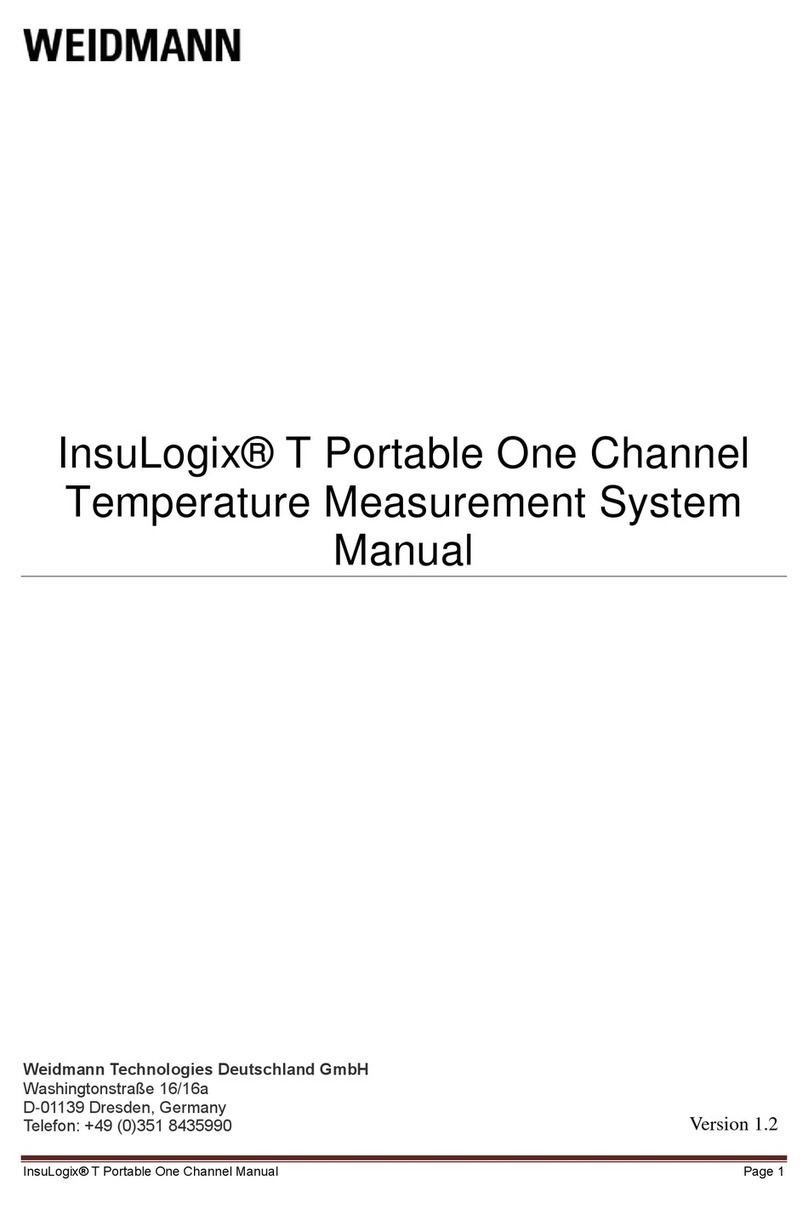
InsuLogix® T Product Manual 3
Connecting the InsuLogix® T to SCADA ...............................................................................23
Relays setup and operation ...................................................................................................23
Data recording.......................................................................................................................24
InsuLogix® T in operation......................................................................................................24
ANNEX A – Wiring Diagram for InsuLogix® T integration with the transformer control cabinet .26
ANNEX B – MODBUS...............................................................................................................27
Figure 1: InsuLogix® T instrument ............................................................................................. 5
Figure 2: InsuLogix® T dimensions............................................................................................ 6
Figure 3: Tank wall kit components ............................................................................................ 7
Figure 4: Tank wall kit overall dimensions .................................................................................. 7
Figure 5: Tank wall Ring dimensions.......................................................................................... 8
Figure 6: Tank wall Plate/Flange dimensions ............................................................................. 9
Figure 7: Optic fiber Feedthrough connector .............................................................................10
Figure 8: J-Box dimensions.......................................................................................................10
Figure 9 Optic fiber probe design and dimensions ....................................................................11
Figure 10 Optic fiber in Oil Coupling (optional) with Ceramic Disk (optional) .............................12
Figure 11: Checking the fiber/connectors continuity and temperature measurement before the
installation on transformer.........................................................................................................14
Figure 12 Bending restrictions...................................................................................................15
Figure 13 Mechanical restrictions..............................................................................................15
Figure 14 Weidmann Smart Spacer with Nomex disk................................................................17
Figure 15 Examples of key spacers prepared for optic fiber probe installation ..........................18
Figure 16 Examples of optic fiber probe mounting in key spacer (Smart Spacer assembly)......18
Figure 17: Connecting the optic fiber cable to connectors on plate and to instrument ...............19
Figure 18: Checking the fiber/connectors continuity and temperature measurement during
system installation on transformer.............................................................................................20
Figure 19 Optic fiber connector cleaning tool ............................................................................21
Figure 20: Connecting the InsuLogix® T to a PC/Laptop...........................................................23
Figure 21: InsuLogix® T LCD....................................................................................................25
Table 1: InsuLogix® T instrument specifications ........................................................................ 6
Table 2: Tank wall Ring specifications ....................................................................................... 8
Table 3: Tank wall Plate/Flange specifications........................................................................... 9
Table 4: Optic fiber Feedthrough connector specifications ........................................................10
Table 5:J-Box specifications......................................................................................................11
Table 6: Extensions specifications ............................................................................................12
Table 7: System installation steps and checks ..........................................................................13
Table 8: Functions available for maximum 8 channels configuration and over 8 channels
configuration .............................................................................................................................24




























